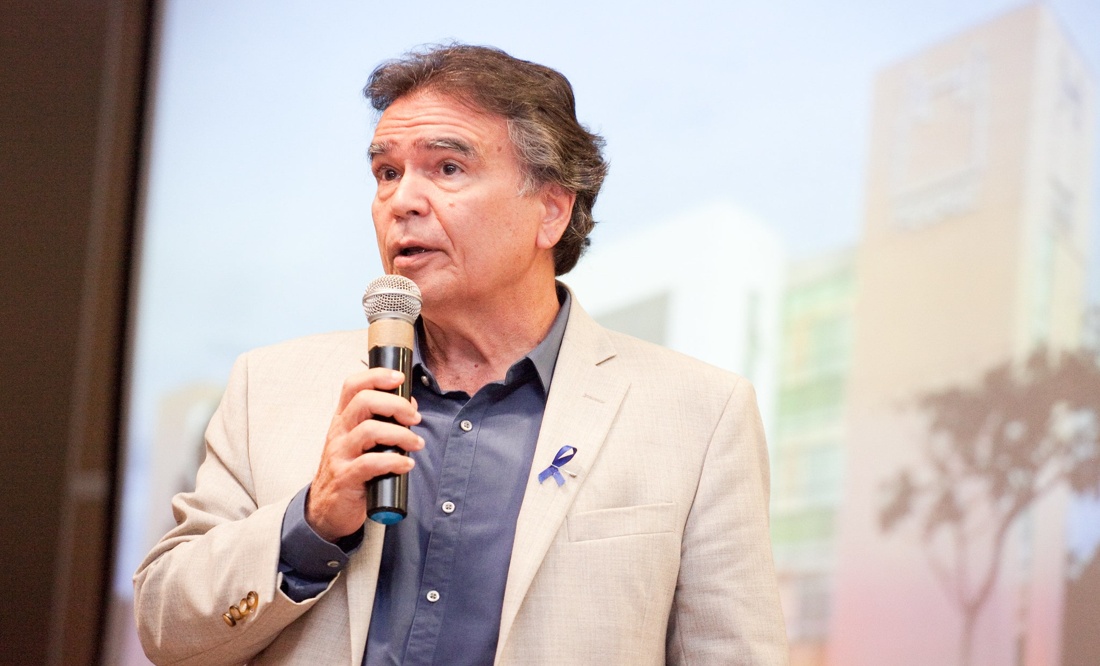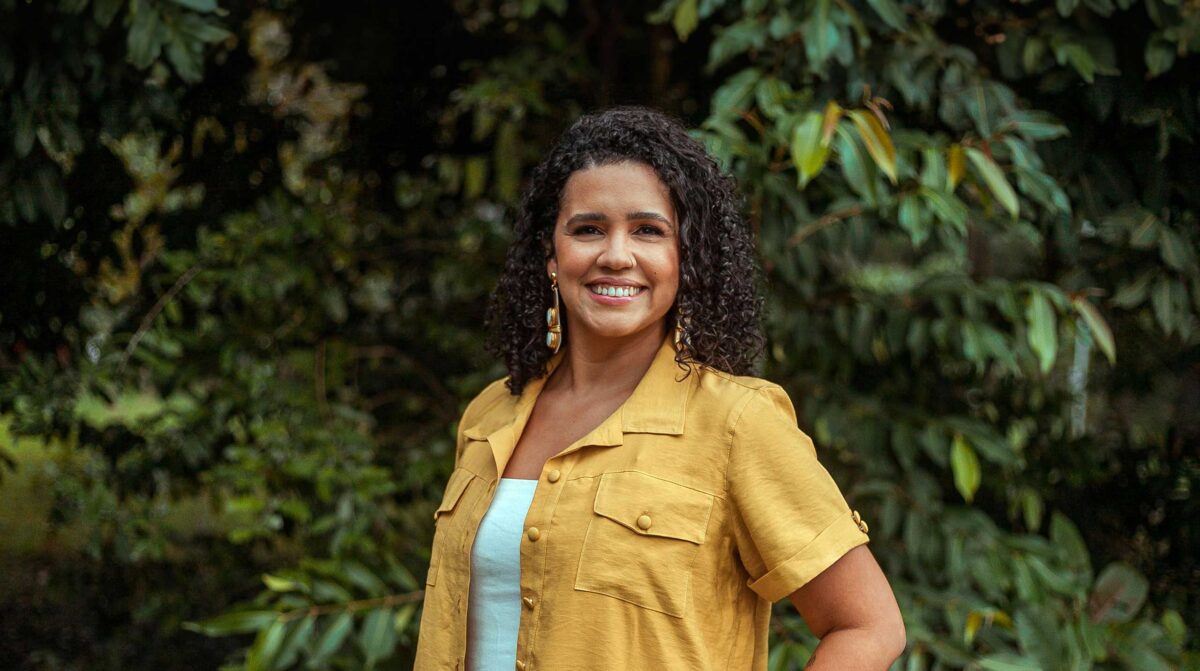 #Interviews
#Interviews
“We want science to be done in the Amazon, not just about the Amazon”
Local communities should be involved in studies carried out in the region, says Marcel Botelho, president of the Amazon Research Foundation
 Marcel do Nascimento Botelho, president of the Amazon Research Foundation (FAPESPA): "The Amazon depends heavily on science and technology. We need national and international help, but we must ourselves play a leading role” | Image: Publicity/FAPESPA
Marcel do Nascimento Botelho, president of the Amazon Research Foundation (FAPESPA): "The Amazon depends heavily on science and technology. We need national and international help, but we must ourselves play a leading role” | Image: Publicity/FAPESPA
There are so many potential topics to study in the Amazon, which is known for its immense biodiversity and cultural identity. The Amazon Research Foundation (FAPESPA), founded in Pará in 2007, is a public institution that supports research and innovation in the Amazon, with the mission of stimulating economic, social, and environmental development in the region.
Agronomist Marcel Botelho, who has headed the agency since 2021, highlights how important it is for research carried out in the Amazon to generate potentially beneficial outcomes for the local population—beyond the limits of academia.
The FAPESPA president says he is enthusiastic about participatory research, in which scientists work in partnership with other members of society (such as Indigenous peoples and public managers) to find solutions to real-world problems, such as the impacts of the climate crisis.
“We can no longer accept merely a discussion about the Amazon. We want the discussion to be in the Amazon, involving ancestral knowledge and local circumstances,” says Botelho, who was dean of the Federal Rural University of Amazonia (UFRA) between 2017 and 2021.
In an interview with Science Arena, Botelho talked about the challenges of funding research projects focused on the Amazon region, and projects such as the Amazon+10 Initiative, which brings together scientists from 25 states in Brazil, as well as from other countries. The objectives of the initiative include strengthening research infrastructure in the Amazon and making efforts to retain researchers in the region.
Science Arena – What are the biggest demands of science and technology in the Amazon?
Marcel Botelho – We are facing a paradigm that needs to be broken. For a long time, the Amazon was seen through a different and erroneous lens. It has been called the “lungs of the world,” but we know that the “lungs” are actually the oceans, not the Amazon. We also know that the region is essential to climate stability.
Under the previous administration [Jair Bolsonaro], there was a huge shortage of funding for science and technology nationwide, especially in the Amazon. And to make matters worse, it was during the COVID-19 pandemic, when we so badly needed investment.
If we continue to look at the past through the wrong lenses, the Amazon will always be seen as an environmental reserve or a region rich for exploration to the point of exhaustion.
If this continues, we will sacrifice more than 35 million people, including in other countries in the South American Amazon, such as Peru, Ecuador, Colombia, Venezuela, Bolivia, Guyana, Suriname, and French Guiana.
How important are research-funding agencies like FAPESPA, and what is their role in the Amazon?
Research agencies play a vital role because they work so closely with researchers, who represent the “end point” of the research projects in laboratory or fieldwork.
State funding agencies have the skills to measure, evaluate, and execute research processes in a localized way that is tailored to the needs of their state. The National Council of State Research Funding Agencies (CONFAP) plays a fundamental role in managing and coordinating this work across the country, acting independently and autonomously to understand the different ecosystems of each state or region.
In a country as big and unequal as Brazil (in terms of economy, education, and development), local knowledge is indispensable. The Amazon is a region that depends heavily on science and technology. We recognize that we need national and international help.
But the people in the Amazon need to be the protagonists—they need to actively participate in research and development (R&D), rather than being mere “consumers” or passive observers of the science carried out in the region.
What are the impacts of exploiting the Amazon to the detriment of investment in local innovation?
The focus on irrational and unbridled exploitation of natural resources to generate wealth (based on the extraction of natural reserves) has resulted in desertification and deforestation throughout the Amazon.
The risk is that the rainforest will be completely wiped out by the quest for constant development. We cannot allow this to happen in the Amazon.
We need a new model, and it is with this in mind that the Amazon+10 Initiative emerged.
What is the Amazon+10 Initiative?
Its name comes from the nine states within the Brazilian Amazon, plus São Paulo, which is home to an institution [the São Paulo State Research Foundation: FAPESP] that is capable of providing many resources to the project.
Even with São Paulo participating, we maintained the mission of prioritizing local knowledge, institutions based in the Amazon, and the region’s leading role in decision-making.
The Amazon+10 Initiative currently has 39 ongoing projects—20 of which involve FAPESPA, which is based in Pará. We are about to issue a final call for proposals for scientific expeditions, motivated by the question: do we really know the Amazon? I assure you we do not.
Research without satellites in the Amazon is done within a short distance of rivers and roads. Little is known about the reality of the Amazon. There are many gaps in our scientific knowledge of the region as a whole.
We are talking about a region that occupies more than 60% of Brazilian territory and that receives much fewer resources, proportionally speaking, than the Atlantic Forest, which occupies a narrow strip of the country.
Was there a lot of demand following the initial call for proposals for scientific expeditions?
We received far more proposals than we had anticipated based on the complexity of the topic: 199 in total. To approve all of them would require an investment of R$500 million.
How can we secure more financial support for research in the Amazon?
Knowing where to allocate resources. In the political sphere, where the debate is more open, the Brazilian Ministry of Science, Technology, and Innovation [MCTI] approved an investment of R$600 million to build the first biosafety level 4 (BSL4) laboratory in Latin America. Named Orion, the lab will be based at the Brazilian Center for Research in Energy and Materials [CNPEM] in Campinas, São Paulo, and will focus on research with class 3 and 4 pathogens [which are highly transmissible and can cause serious diseases].
The Evandro Chagas Institute in Pará is recognized worldwide for its work on viruses in tropical forests. Instead of building the lab here, the MCTI decided to put it in Campinas. I have nothing against the CNPEM receiving this investment, but the expertise is in Belém, Pará. The people holding the purse strings do not always make the best decisions.
What other differences are there in the research carried out in Pará?
In our state, we have well-established plans for the economy and for the recovery of native vegetation. Since 2019, Pará has been moving from discourse to practice. To take this further, we need serious, constant, and robust investment. This is the only way we can strengthen our science and technology structures.
I am tremendously concerned when I see an institute for researching the Amazon being opened in São Paulo, like the Center for Studies on a Sustainable Amazon [CEAS] at the University of São Paulo [USP].
Why does this concern you?
We have almost 200 research institutions in the Amazon, all of which need investment and infrastructure support. In recent years, they have suffered from degradation and a scientific diaspora [the loss of scientists to institutions in other states or countries].
Our researchers are recruited by institutions with more money and better working conditions. They are taking people who would have studied the Amazon from inside the Amazon.
We can no longer accept merely a discussion about the Amazon. We want to promote a discussion in the Amazon. We want to take a leading role [in research], including ancestral knowledge and local circumstances.
What are the challenges involved in this?
In Brazil, the Amazonian states invest the least in science and technology, proportionally speaking. We need to make a strategic decision to truly preserve the Amazon through the social development that the population deserves.
We should not receive the same proportion of resources that other regions receive. We have to put in at least double the amount that the Amazon currently contributes to Brazil’s gross domestic product [GDP] to reach a viable level.
And while the Amazon as a whole represents around 6.5% of the national GDP, it receives only 3% of the national investment in science and technology. My suggestion is that we receive double our contribution, meaning 13% of the country’s science, technology, and innovation funding.
*
This article may be republished online under the CC-BY-NC-ND Creative Commons license.
The text must not be edited and the author(s) and source (Science Arena) must be credited.


